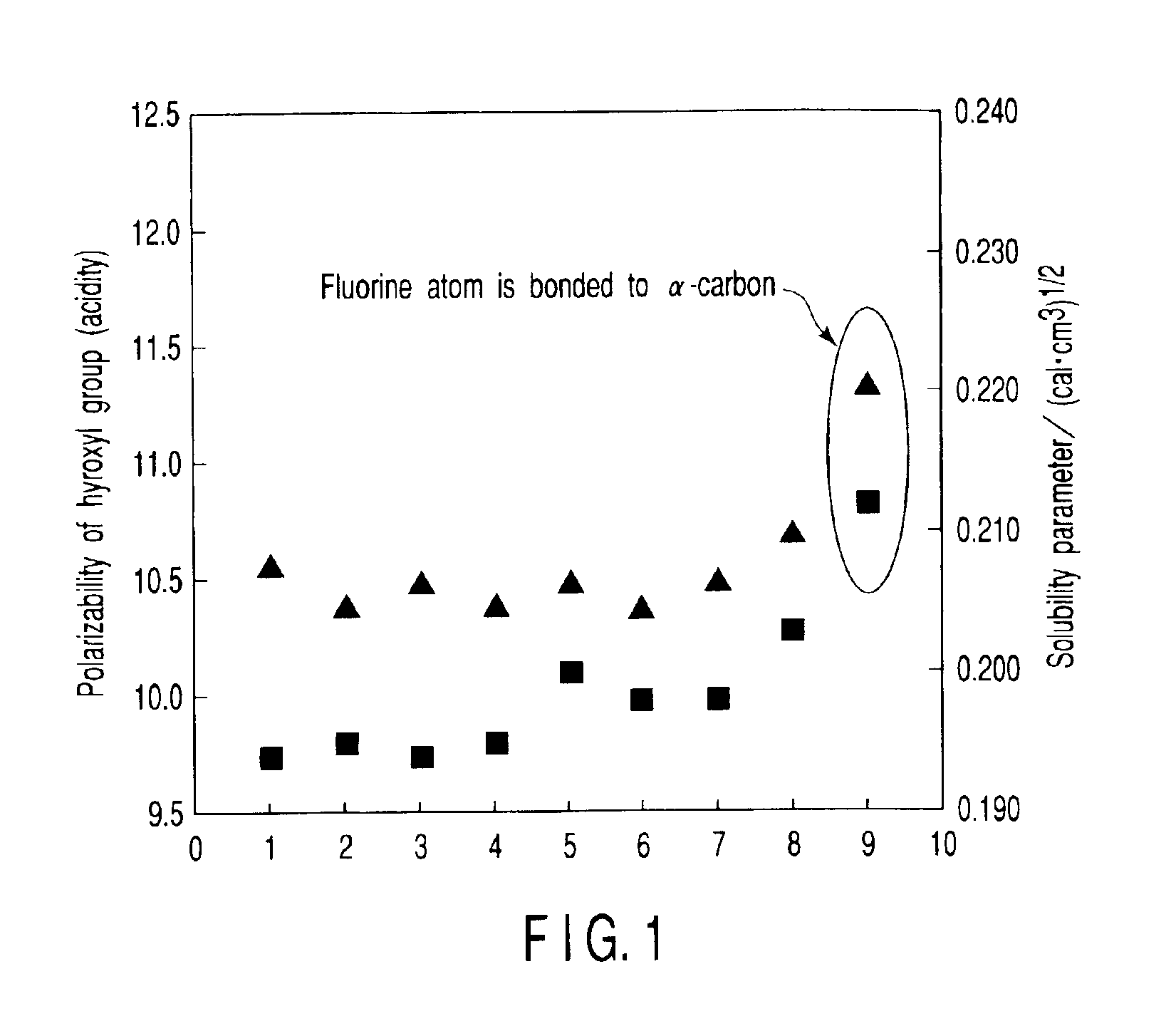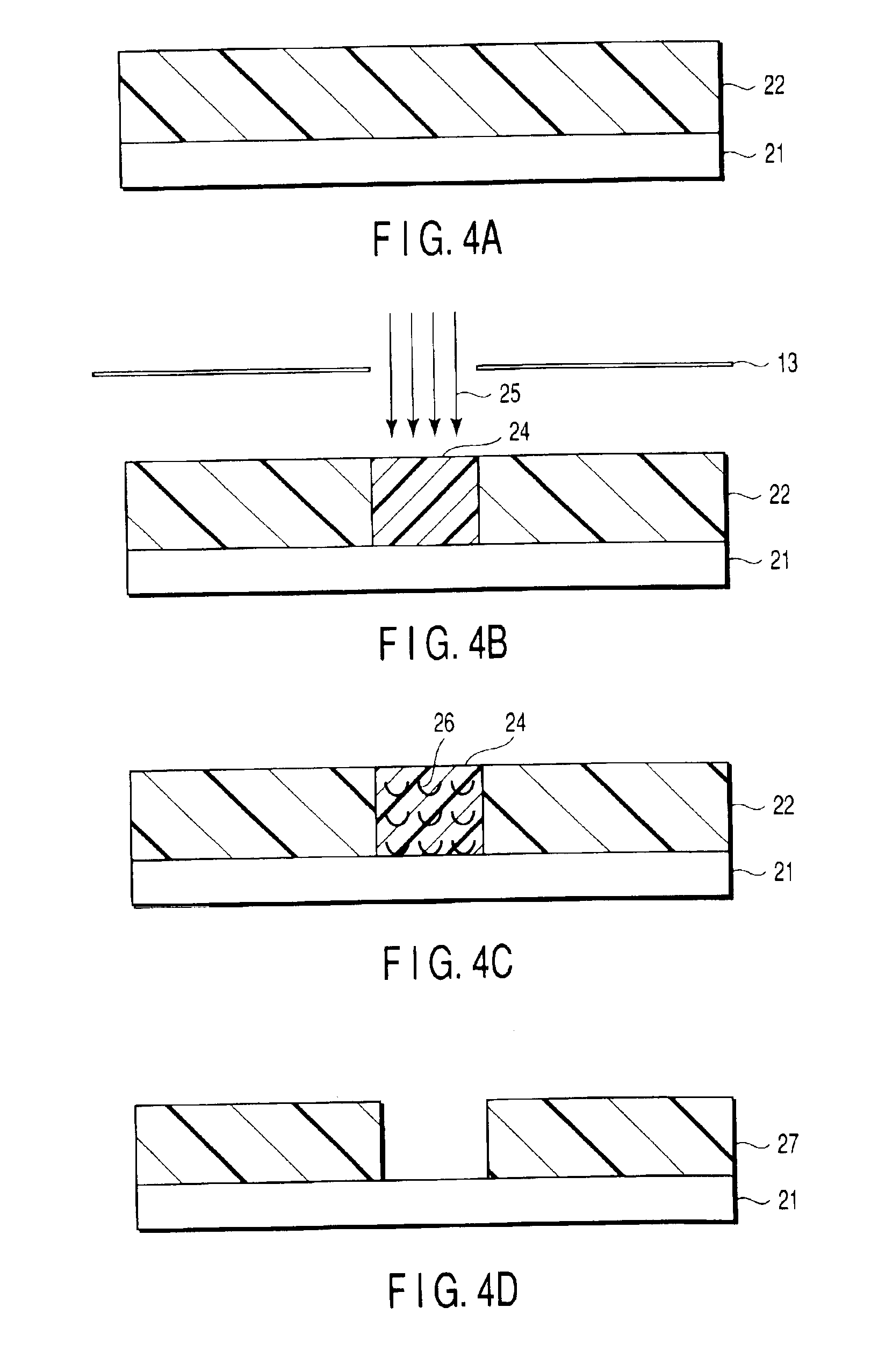High molecular compound, monomer compounds and photosensitive composition for photoresist, pattern forming method utilizing photosensitive composition, and method of manufacturing electronic components
- Summary
- Abstract
- Description
- Claims
- Application Information
AI Technical Summary
Benefits of technology
Problems solved by technology
Method used
Image
Examples
example 1
SYNTHESIZING EXAMPLE 1
[0192]0.04 mol of 4-oxovinyladamantane (A), 0.05 mol of tetramethylsilyl trifluoromethane, and 0.05 mol of tetrabutylammonium fluoride were dissolved in 140 g of tetrahydrofuran and mixed together to precipitate a salt, which was then filtered out, and the filtrate was neutralized. After the separation of the filtrate, the resultant liquid was concentrated to obtain a trifluoromethylated product (Af) of the compound (A).
[0193]0.02 mol of the compound (Af), 0.03 mol of dihydropyran, and 0.001 mol of tosylic acid were dissolved in 100 g of dichloromethane and mixed together to obtain a solution, which was then neutralized and separated. After this separation, the resultant liquid was concentrated to obtain a tetrahydropyranyl-substituted product (B) of the compound (Af).
example 2
SYNTHESIZING EXAMPLE 2
[0194]0.04 mol of 4-oxovinyladamantane (A), 0.06 mol of tetramethylsilyl pentafluoroethane, and 0.06 mol of tetrabutylammonium fluoride were dissolved in 140 g of tetrahydrofuran and mixed together to precipitate a salt, which was then filtered out, and the filtrate was neutralized. After the separation of the filtrate, the resultant liquid was concentrated to obtain a pentafluoroethylated product (Af) of the compound (A).
[0195]0.02 mol of the compound (Af), 0.03 mol of butylvinyl ether, and 0.002 mol of tosylic acid were dissolved in 100 g of dichloromethane and mixed together to obtain a solution, which was then neutralized and separated. After this separation, the resultant liquid was concentrated to obtain a butoxyethyl-substituted product (C) of the compound (Af).
example 3
SYNTHESIZING EXAMPLE 3
[0196]0.04 mol of 4-oxovinyladamantane (A), 0.06 mol of tetramethylsilyl heptafluoropropane, and 0.06 mol of tetrabutylammonium fluoride were dissolved in 140 g of tetrahydrofuran and mixed together to precipitate a salt, which was then filtered out, and the filtrate was neutralized. After the separation of the filtrate, the resultant liquid was concentrated to obtain a heptafluoropropylated product (Af) of the compound (A).
[0197]0.02 mol of the compound (At), 0.03 mol of propylvinyl ether, and 0.004 mol of tosylic acid were dissolved in 100 g of dichloromethane and mixed together to obtain a solution, which was then neutralized and separated. After this separation, the resultant liquid was concentrated to obtain a propoxyethyl-substituted product (D) of the compound (Af).
PUM
| Property | Measurement | Unit |
|---|---|---|
| Magnetic field | aaaaa | aaaaa |
| Electric charge | aaaaa | aaaaa |
| Electric charge | aaaaa | aaaaa |
Abstract
Description
Claims
Application Information
 Login to View More
Login to View More - R&D
- Intellectual Property
- Life Sciences
- Materials
- Tech Scout
- Unparalleled Data Quality
- Higher Quality Content
- 60% Fewer Hallucinations
Browse by: Latest US Patents, China's latest patents, Technical Efficacy Thesaurus, Application Domain, Technology Topic, Popular Technical Reports.
© 2025 PatSnap. All rights reserved.Legal|Privacy policy|Modern Slavery Act Transparency Statement|Sitemap|About US| Contact US: help@patsnap.com



